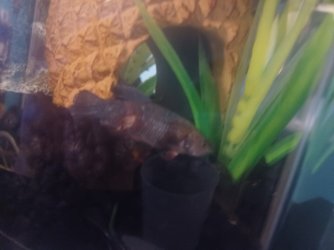SOB
New Member
Thank you for your patience with spelling/grammar mistakes.
Feel free to ask any questions you feel are necessary.
I have had my betta for a year. 5 days ago, I noticed he had a lump/red spont on his side. Now it's an open sore and after researching I'm 99% sure it's an ulcer or abcess. 2 days ago, I did a water change and added 1tsp/gal. of salt (not aquarium, but non iodidzed). I haven't had a chance to buy antifungal medication, nor do I have any on hand (I plan to buy some tomorrow). Today, I did a small water change adding 30% more salt, as that did seem to make him more active than he had been.
My main concern is about 4 days ago he stopped eating and moves occasionally/when disturbed, otherwise spending all his time on the bottom of the tank.
Does anyone have any advice? Should I euthanize him? I don't want him to die of starvation, much less with a wound on his side.
Feel free to ask any questions you feel are necessary.
I have had my betta for a year. 5 days ago, I noticed he had a lump/red spont on his side. Now it's an open sore and after researching I'm 99% sure it's an ulcer or abcess. 2 days ago, I did a water change and added 1tsp/gal. of salt (not aquarium, but non iodidzed). I haven't had a chance to buy antifungal medication, nor do I have any on hand (I plan to buy some tomorrow). Today, I did a small water change adding 30% more salt, as that did seem to make him more active than he had been.
My main concern is about 4 days ago he stopped eating and moves occasionally/when disturbed, otherwise spending all his time on the bottom of the tank.
Does anyone have any advice? Should I euthanize him? I don't want him to die of starvation, much less with a wound on his side.




